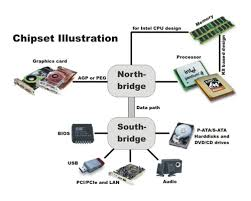
Breaking News
 Who Really Owns America (It's Not Who You Think)
Who Really Owns America (It's Not Who You Think)
 Canada Surrenders Control Of Future Health Crises To WHO With 'Pandemic Agreement': Report
Canada Surrenders Control Of Future Health Crises To WHO With 'Pandemic Agreement': Report
 Retina e-paper promises screens 'visually indistinguishable from reality'
Retina e-paper promises screens 'visually indistinguishable from reality'
 Unearthed photos of 'Egypt's Area 51' expose underground complex sealed off...
Unearthed photos of 'Egypt's Area 51' expose underground complex sealed off...
Top Tech News
 Future of Satellite of Direct to Cellphone
Future of Satellite of Direct to Cellphone
 Amazon goes nuclear with new modular reactor plant
Amazon goes nuclear with new modular reactor plant
 China Is Making 800-Mile EV Batteries. Here's Why America Can't Have Them
China Is Making 800-Mile EV Batteries. Here's Why America Can't Have Them
 China Innovates: Transforming Sand into Paper
China Innovates: Transforming Sand into Paper
 Millions Of America's Teens Are Being Seduced By AI Chatbots
Millions Of America's Teens Are Being Seduced By AI Chatbots
 Transhumanist Scientists Create Embryos From Skin Cells And Sperm
Transhumanist Scientists Create Embryos From Skin Cells And Sperm
 You've Never Seen Tech Like This
You've Never Seen Tech Like This
 Sodium-ion battery breakthrough: CATL's latest innovation allows for 300 mile EVs
Sodium-ion battery breakthrough: CATL's latest innovation allows for 300 mile EVs
 Defending Against Strained Grids, Army To Power US Bases With Micro-Nuke Reactors
Defending Against Strained Grids, Army To Power US Bases With Micro-Nuke Reactors
Smallest fully functional space probes now in orbit are precursors to interstellar chipsats

Small chip probes have been launched into low Earth orbit on June 23. Sprites are 'satellites on a chip,'. Research performed by Mason Peck and his team at Cornell University included Breakthrough Starshot's Zac Manchester Zac used a Kickstarter campaign to develop the concept in 2011.
These are the smallest fully functional space probes ever put into space. Each 3.5-by-3.5 centimeter probe built upon a single circuit board and weighing in at just four grams. A Sprite can contain solar panels, computers, communications capability and an array of sensors. The tiny spacecraft's electronics all function off the 100 milliwatts of electricity each generates.
Russian entrepreneur Yuri Milner has put $100 million into funding the first five years of the Breakthrough Starshot project. Th goal is to develop chips with a weight of roughly one gram and fit them to a lightweight sail before propelling them through space with a 100-billion watt laser.

 SpaceX Heat Shield and Starship Mass Production
SpaceX Heat Shield and Starship Mass Production

